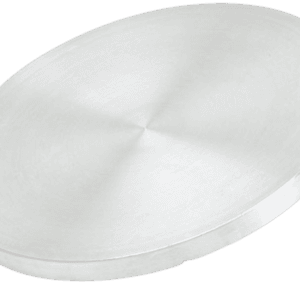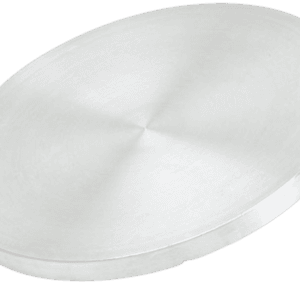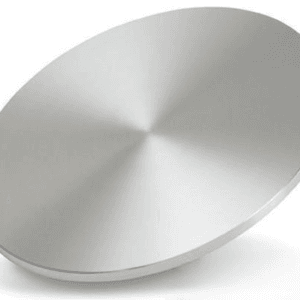Dysprosium Fluoride Sputtering Target
Introduction
The Dysprosium Fluoride (DyF₃) Sputtering Target is a specialized material for thin film deposition, widely valued in optics, semiconductors, and energy technologies. With the strong magnetic properties of dysprosium and the optical transparency of fluorides, DyF₃ films exhibit unique optical and electronic behaviors, making them suitable for high-performance coatings in lasers, displays, and photonic devices.
Detailed Description
Dysprosium Fluoride sputtering targets are manufactured using high-purity DyF₃ powders (≥99.9%) through sintering or hot-pressing. The resulting dense, uniform targets ensure efficient sputtering and stable thin film growth. Key features include:
High Purity (≥99.9%): Critical for minimizing impurities in optical and electronic coatings.
Uniform Microstructure: Provides consistent sputtering rates and smooth films.
Stable Chemical Properties: Excellent resistance to moisture and high temperatures in vacuum deposition.
Custom Sizes: Available in standard and custom dimensions, from 25 mm up to 300 mm diameter.
Bonding Options: Indium, copper, or elastomer backing for enhanced thermal management.
The DyF₃ compound has a relatively wide bandgap and high refractive index, making it suitable for optical coatings and functional thin films.
Applications
Dysprosium Fluoride sputtering targets are applied in:
Optical coatings: Anti-reflective and laser mirror coatings.
Semiconductors: Thin films for electronic and optoelectronic devices.
Photonic devices: Used in display technologies and communication optics.
Energy applications: Coatings for specialized energy storage and conversion devices.
Research & Development: Advanced material studies in rare-earth fluoride thin films.
Technical Parameters
| Parameter | Typical Value / Range | Importance |
|---|---|---|
| Purity | ≥99.9% (3N) | Reduces film contamination |
| Diameter | 25 – 300 mm (custom) | Fits various sputtering systems |
| Thickness | 3 – 6 mm | Influences sputtering rate and lifetime |
| Density | ~6.2 g/cm³ | Ensures stable sputtering |
| Bonding | Indium, Copper, Elastomer | Improves target strength & heat dissipation |
Comparison with Related Materials
| Material | Key Advantage | Typical Application |
|---|---|---|
| Dysprosium Fluoride | High refractive index, stable films | Optical coatings, lasers |
| Yttrium Fluoride (YF₃) | Broad IR transparency | Infrared optics |
| Magnesium Fluoride (MgF₂) | Low refractive index, durability | Anti-reflective coatings |
FAQ
| Question | Answer |
|---|---|
| Can DyF₃ sputtering targets be customized? | Yes, we offer custom diameters, thicknesses, and bonding solutions. |
| How is it packaged? | Each target is vacuum-sealed, cushioned with protective foam, and packed in export-safe cartons or wooden crates. |
| Which industries use DyF₃ targets? | Optics, semiconductors, photonics, and advanced R&D. |
| Do you provide bonded targets? | Yes, indium, copper, and elastomer bonding options are available. |
Packaging
Our Dysprosium Fluoride sputtering targets are carefully vacuum-sealed and securely cushioned to prevent oxidation or physical damage. Each piece is labeled for traceability and shipped in export-compliant packaging for worldwide delivery.
Conclusion
The Dysprosium Fluoride (DyF₃) Sputtering Target is a high-value material for advanced thin film deposition, offering stability, high purity, and versatility across optics, semiconductors, and energy applications. With customizable dimensions and bonding options, it is a reliable choice for both industrial use and cutting-edge research.
For detailed specifications and a quotation, please contact us at [sales@thinfilmmaterials.com].





Reviews
There are no reviews yet.